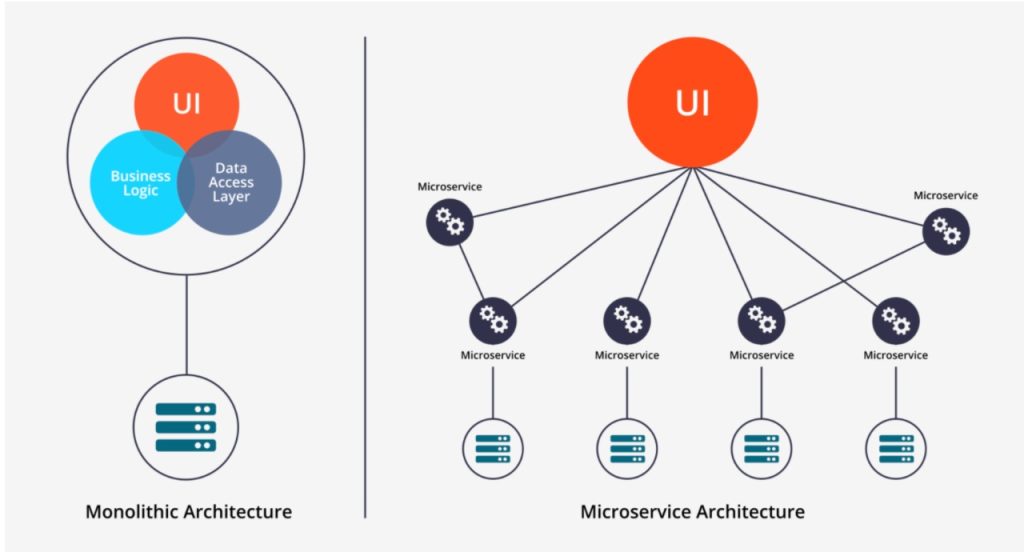
Migrating from a monolithic architecture to a microservice architecture can offer many benefits, such as more independence, flexibility, scalability, disaster recovery, and service availability. However, this transformation can also be complex and challenging.
A well-architected microservice application is essential for a successful transformation from a monolithic application to a cloud-native application. It can help companies handle the challenges of microservices across development, deployment, and operations, and optimize their transition efforts and reduce costs.
We follow these best practices to help businesses achieve the significant advantages that cloud-native microservices offer:
Development:
- Streamlining repositories based on the functionality
- API-first approach and Asynchronous communication including Retry mechanism and resilience
- Backward compatibility of API contracts
- Sizing of microservices, conduct load testing during development cycle
- Common logging system
- Dev SecOps: Security measures while using third-party libraries for microservices
Deployment:
- Streamline deployment processes using efficient CI/CD pipelines
- Develop a comprehensive test strategy focusing on continuous integration, and ensuring seamless movement from development to production
- Maintain consistency in configuration management, and deployment procedures across all environments
- Aim for zero downtime during deployment, especially for mission-critical applications
Operations:
- Ensure backward compatibility ensures proper inter-functioning and operations of all contracts
- Consider multiple operational strategies when implementing new versions of microservices
- Focus on High Availability and Scalability
- Monitoring service response times for improved quality of service based on service-level objectives (SLOs)

 Sampath Kumar Sabbineni (Sam) began his career as a software developer and gained valuable experience in various roles at prominent MNC’s such as Deloitte, Capgemini, and Amway over a span of 13 years. In 2016, he embarked on his entrepreneurial journey by joining Kraft Software Solutions in Kuala Lumpur, Malaysia, and has since expanded globally as a VKraft Software Services with branches in Singapore, India, Indonesia, and The USA. Sam provides a range of innovative Digital Solutions addressing challenges in the Digital Era. His vision is to lead at the forefront of the digital platform, offering products with unique functionalities across diverse sectors, including Healthcare, Insurance, Banking, Retail, Logistic, Environmental, and Manufacturing.
Sampath Kumar Sabbineni (Sam) began his career as a software developer and gained valuable experience in various roles at prominent MNC’s such as Deloitte, Capgemini, and Amway over a span of 13 years. In 2016, he embarked on his entrepreneurial journey by joining Kraft Software Solutions in Kuala Lumpur, Malaysia, and has since expanded globally as a VKraft Software Services with branches in Singapore, India, Indonesia, and The USA. Sam provides a range of innovative Digital Solutions addressing challenges in the Digital Era. His vision is to lead at the forefront of the digital platform, offering products with unique functionalities across diverse sectors, including Healthcare, Insurance, Banking, Retail, Logistic, Environmental, and Manufacturing.